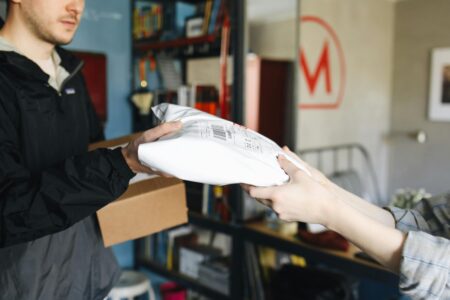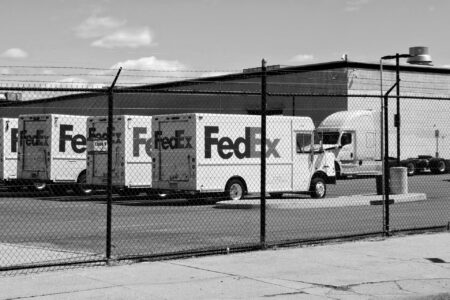Waiting anxiously for a package only to discover Canada Post is holding it can be frustrating, to say the least. But how long will they keep a parcel before sending it back? What factors determine the hold time? In this comprehensive guide, we’ll dive into the ins and outs of Canada Post’s parcel-holding policies, ensuring you never miss a delivery again.
So how long does Canada Post hold an undelivered parcel before sending it back? Let’s find out.
Canada Post generally holds domestic parcels for 15 calendar days before returning them to the sender. However, this period can vary depending on the type of package and current circumstances, such as COVID-19 impacts.
What is Canada Post’s standard holding period for parcels?
When it comes to parcel retention, Canada Post has established a standard holding period that strikes a balance between customer convenience and operational efficiency. For most domestic parcels, Canada Post generally holds packages at the local post office for 15 calendar days before returning them to the sender. This two-week window gives recipients ample time to retrieve items that couldn’t be delivered directly to their address.
It’s worth noting that this hold period kicks in after a delivery attempt has been made and a Delivery Notice Card has been left for the recipient. In other words, the clock starts ticking from the moment Canada Post tries to deliver your package and finds no one home to receive it.
If the parcel is not collected within this 15-day timeframe, Canada Post will return it to the sender. However, it’s important to keep in mind that there may be specific circumstances that alter this process, such as the suspension of the hold period during certain operational adjustments. We’ll dive into these exceptions a bit later.
As well as the standard 15-day hold, there are some variations depending on the type of service used. For instance, Xpresspost and Priority packages, which are designed for speedier delivery, have a shorter hold time of just 7 days. This expedited timeframe aligns with the urgent nature of these shipping services.
| Service Type | Hold Period |
|---|---|
| Standard Domestic Parcels | 15 calendar days |
| Xpresspost and Priority Packages | 7 calendar days |
Remember, the clock starts ticking from the day the parcel arrives at the post office, not from when you receive the delivery notice. As such, it’s crucial to act promptly once you’re aware that a package is waiting for you. After all, time waits for no one, and neither does Canada Post!
How Long Does Canada Post Hold a Parcel?
If you’re wondering why your parcel did not arrive as scheduled, first check the expected delivery date. Canada Post aims to deliver items within 2-8 business days for regular Parcel Services. If your package is past due, further investigation is warranted.
So when exactly can you expect Canada Post to return an undelivered parcel to the sender? This depends on the service used:
- Regular Parcel: Held for 15 calendar days from the date of arrival at the post office responsible for delivery.
- Xpresspost: Held for 5 calendar days.
- Priority: Held for 30 calendar days.
- Library Materials: Held for 15 business days.
These timelines include attempts to deliver the item before returning it. Of course, exceptions can occur like weather delays that may briefly extend the holding period.
Got an international parcel? Those get held at the post office for 15 calendar days before heading back.
How has COVID-19 affected parcel hold times?
The global pandemic has, without a doubt, thrown a wrench in the works of postal services worldwide, and Canada Post is no exception. During the height of the COVID-19 crisis, Canada Post had to think on its feet and implement several changes to its operations.
At the peak of the pandemic, the standard 15-day holding period was suspended, and parcels were held until further notice. This move was necessary to manage the sky-high volumes of packages and to ensure that both postal workers and recipients could follow public health guidelines safely. In addition, this suspension of the normal hold period is a prime example of the “specific circumstances” that can alter the usual process, as mentioned earlier.
As the situation evolved, so did Canada Post’s approach. They adopted more flexible holding times, adapting to the ever-changing landscape of the pandemic. Now, with COVID-19 measures easing, Canada Post has been working towards reinstating its standard hold times. That being said, it’s important to keep in mind that the effects of the pandemic are still being felt in postal operations.
While the standard 15-day hold has largely been reinstated, there may still be instances where hold times are extended due to ongoing pandemic protocols or local health guidelines. As well as checking the delivery notice card, it’s advisable to keep an eye on Canada Post’s official website for the most up-to-date information on any changes to hold times or pickup procedures.
Are there exceptions to the standard holding period?
While the 15-day hold is the norm for most parcels, there are indeed exceptions to this rule:
- Xpresspost and Priority Packages: As mentioned earlier, these expedited services have a shorter hold time of 7 days. This is because customers paying for faster shipping often need their items more urgently.
- Perishable Items: Parcels containing perishable goods may be held for shorter periods to prevent spoilage.
- Custom Hold Requests: In some cases, customers can request a longer hold period if they know they’ll be unable to pick up their parcel within the standard timeframe.
- International Parcels: Hold times for international packages may vary depending on customs clearance processes and agreements with foreign postal services.
- Parcels Requiring Signature: Items that require a signature upon delivery may have different hold policies to ensure security and proper chain of custody.
It’s always best to check the specific details for your parcel, as hold times can vary based on the type of service used and any special handling requirements.
Why does Canada Post have a 15-day holding period?
The 15-day standard holding period set by Canada Post is not arbitrary. It’s a carefully considered timeframe that takes into account several factors:
- Customer Convenience: The two-week window allows most recipients enough time to arrange for pickup, even if they’re temporarily away or have busy schedules.
- Operational Efficiency: Holding parcels for a set period helps Canada Post manage its sorting facilities and maintain a smooth workflow, especially during high-volume periods.
- Security Considerations: The holding period ensures that parcels remain secure until the rightful recipient can retrieve them.
- Cost Management: By limiting the hold time, Canada Post can control storage costs and reduce the resources needed for managing unclaimed parcels.
- Environmental Factors: Canada’s vast geography and varying climate conditions are considered, allowing for potential weather-related delays in some regions.
This standardized approach helps Canada Post balance the needs of its customers with the realities of managing a nationwide postal service efficiently.
Reasons Why Packages Get Returned to Sender
There are a variety of reasons why mail items ultimately get returned to the sender instead of the intended recipient:
Inaccurate Address Details
One of the most common reasons for failed deliveries is inaccurate recipient addresses or postal codes. If the courier can’t validate the location details, parcel return is triggered.
Refusal to Accept Delivery
Sometimes the person at the delivery address refuses to accept the mail item. This also kickstarts the return process.
Non-Retrieval from Post Office
As discussed earlier, when recipients don’t pick up a mail item from the post office within the holding timeframe, it has to be shipped back to its origin.
Restricted or Prohibited Goods
If a parcel contains dangerous, restricted, or prohibited goods, Canada Post legally can’t deliver it. Returning it to the sender becomes necessary.
So unless recipients take timely action, undelivered parcels have no option but to return to the original sender per Canada Post regulations.
What happens if you miss the pickup deadline?
If, despite your best efforts, you fail to retrieve your parcel within the designated hold period, here’s what typically unfolds:
- Return Initiation: Once the 15-day hold period expires (or 7 days for priority items), Canada Post begins the process of returning the parcel to the sender. It’s like a homeward journey for your package.
- Sender Notification: The original sender is notified that their parcel is being returned due to non-collection. This gives them a heads-up that their package is coming back.
- Return Shipping: The parcel is shipped back to the sender, which may take several days depending on the distance and service level. It’s a reverse delivery if you will.
- Potential Fees: Depending on the original shipping arrangement, the sender may incur return shipping fees. This is something to keep in mind, especially if you’re the one who sent the package.
- Refund Policies: Some sellers may have policies regarding refunds for returned items, which could affect your ability to receive a refund or have the item reshipped. It’s always a good idea to check the seller’s policies before making a purchase.
Can you request an extension for the parcel hold?
Yes, in many cases, you can request an extension for a parcel hold. Here’s what you need to know:
- Contact Canada Post: Reach out to Canada Post customer service as soon as you realize you’ll need more time.
- Provide Justification: Be prepared to explain why you need an extension (e.g., travel, illness, etc.).
- Time Sensitivity: Make your request before the original hold period expires for the best chance of approval.
- Extension Limits: While extensions are possible, they’re not indefinite. Canada Post will consider reasonable requests but may have limits on how long they can hold a parcel.
- Documentation: In some cases, you may need to provide documentation to support your extension request, especially for longer holds.
Remember that while Canada Post tries to accommodate customer needs, extensions are granted on a case-by-case basis and are not guaranteed.
What happens if I miss the 15-day hold period?
If you find yourself in a situation where you’ve missed the 15-day hold period, don’t panic just yet. While it’s true that Canada Post typically initiates the return process after this time, there might still be a glimmer of hope.
Your first port of call should be to contact your local post office immediately. In some cases, if the parcel hasn’t yet been processed for return, they may be able to hold it for an extra day or two. However, this is at the discretion of the post office and isn’t guaranteed.
If the parcel has already been sent back, you’ll need to contact the sender to arrange for it to be re-shipped. Keep in mind that this may involve additional shipping costs, so it’s always best to avoid this situation if possible.
What alternatives are available if you can’t pick up your parcel?
If you’re unable to pick up your parcel in person, Canada Post offers several alternatives:
- Redelivery: You can request that Canada Post attempt to redeliver the parcel to your address on a specified date.
- Redirection: Have the parcel redirected to a different address where someone can receive it on your behalf.
- FlexDelivery: Sign up for this service to have future parcels delivered directly to a post office of your choice.
- Authorized Pickup: Designate someone else to pick up the parcel for you by providing them with the necessary authorization.
- Hold for Pickup: If you know you’ll be away, you can sometimes arrange for a parcel to be held at the post office for an extended period before it’s even shipped.
- Community Mailboxes: Some areas have community mailboxes with parcel compartments, allowing for 24/7 access to your deliveries.
How can I authorize someone else to pick up my parcel?
Life can be unpredictable, and there may be times when you’re unable to pick up your parcel yourself. Fortunately, Canada Post allows you to authorize someone else to collect it on your behalf. Here’s how:
- Written Authorization: Provide the person you’re authorizing with a signed note giving them permission to pick up your parcel. Include your name, address, and the item number from your delivery notice card.
- Identification: The authorized person will need to present their own government-issued photo ID along with your written authorization.
- Delivery Notice Card: Don’t forget to give them the delivery notice card or a copy of it. This contains crucial information about your parcel.
- Online Authorization: For some services, you may be able to authorize pickup online through Canada Post’s website. Check your delivery notice for details.
Remember, choose someone you trust, as they’ll be taking possession of your parcel on your behalf. It’s like handing over the keys to your postal kingdom!
Are there any fees for returning a parcel to the sender?
When it comes to fees for returning uncollected parcels, the situation can be a bit of a mixed bag. Here’s the lowdown:
- For the Recipient: Generally, there are no direct fees charged to the recipient (that’s you!) for a parcel being returned due to non-collection.
- For the Sender: The sender may incur return shipping fees, depending on the original shipping arrangement and the type of service used.
- Restocking Fees: While not a Canada Post fee, some retailers may charge restocking fees for returned items. This is especially common with larger items or specialty products.
- Re-shipping Costs: If you still want the item after it’s been returned, you may need to pay for shipping again to have it sent back to you.
It’s worth noting that while you might not see direct fees from Canada Post, the cost of uncollected parcels can add up in other ways. As they say, there’s no such thing as a free lunch – or in this case, a free return!
What should I do if the parcel is returned to the sender by mistake?
Mistakes happen, even in the world of postal services. If your parcel has been returned to the sender by mistake, here’s what you should do:
- Contact Canada Post: Reach out to Canada Post customer service immediately. Explain the situation and provide them with all relevant details, including tracking numbers and dates.
- Gather Evidence: If you have any proof that you attempted to collect the parcel within the hold period (like a screenshot of tracking information), have this ready to share.
- Reach Out to the Sender: Contact the sender to let them know about the mistake. They may need to initiate a claim with Canada Post or arrange for the item to be reshipped.
- Be Patient: Resolving such issues can take time. Canada Post will need to investigate the situation, which may involve checking records at the local post office.
- Consider Compensation: If the mistake has caused you significant inconvenience or financial loss, you may be eligible for compensation. Discuss this with Canada Post during your communications.
Key Takeaways
- Canada Post typically holds domestic parcels for 15 calendar days, with exceptions for priority services (7 days).
- COVID-19 has led to more flexible hold times, but standard periods are gradually being reinstated.
- Factors like weather, postal strikes, and recipient circumstances can extend hold periods.
- To avoid returns, act promptly on delivery notices and use Canada Post’s online tools to stay informed.
- Extensions may be possible but must be requested before the hold period expires.
- Alternatives like redelivery, redirection, and authorized pickup are available if you can’t collect your parcel personally
Frequently Asked Questions
Q: Can I pick up my parcel from Canada Post on weekends?
A: Many Canada Post offices are open on Saturdays, but Sunday pickups are generally not available. Check your local post office hours for specific availability.
Q: What ID do I need to pick up a held parcel?
A: You usually need a government-issued photo ID and a delivery notice card. If someone else is picking up on your behalf, they’ll need written authorization from you.
Q: Are there any fees for picking up a held parcel?
A: There are generally no additional fees for picking up a held parcel within the standard hold period. However, some services may have associated costs, such as redelivery fees.












Leave a Reply